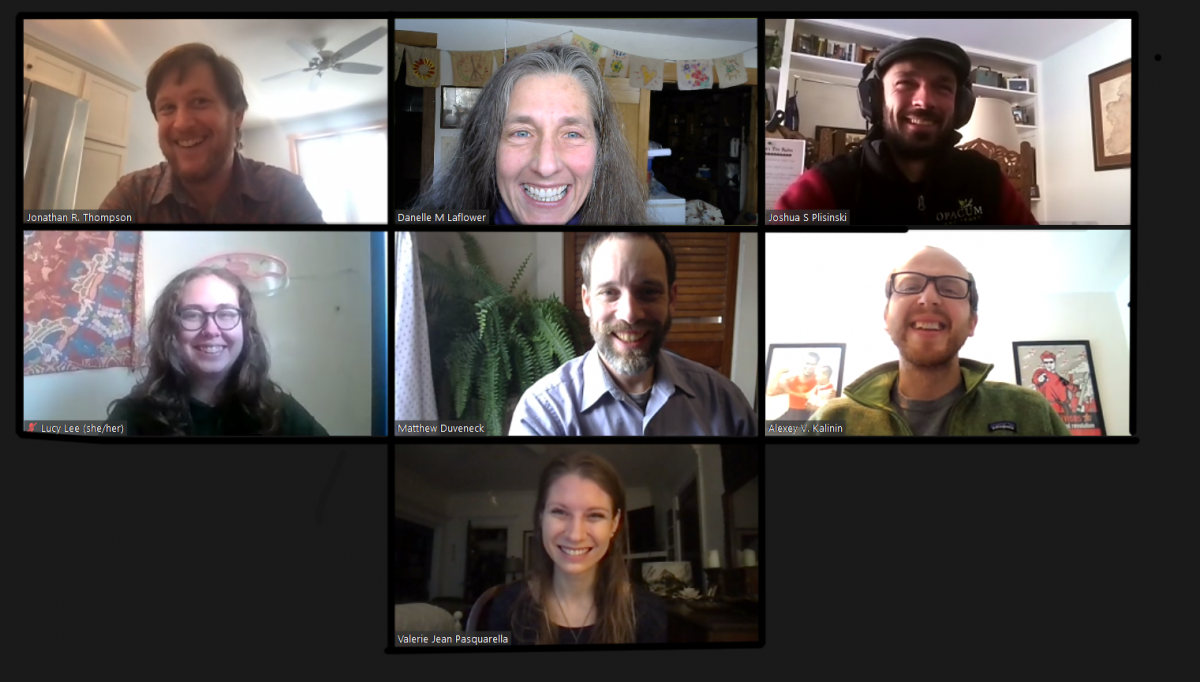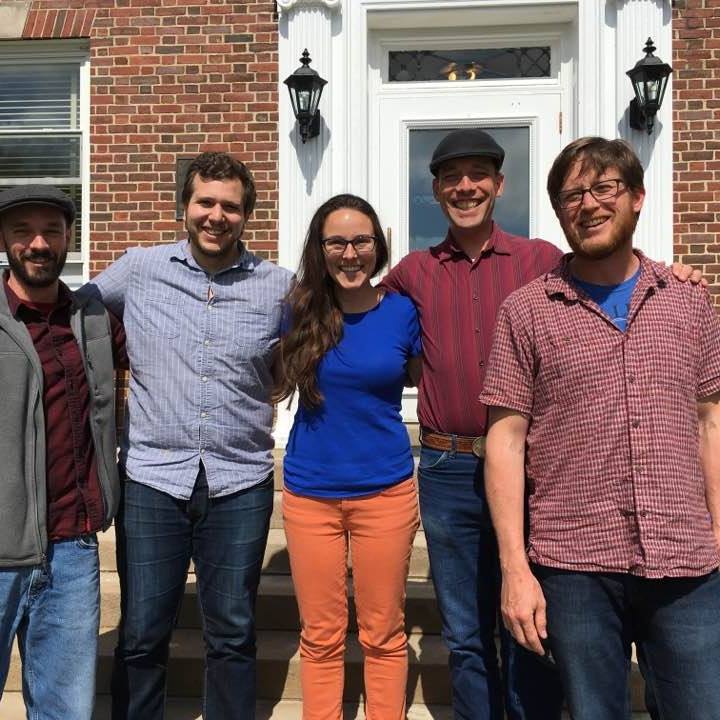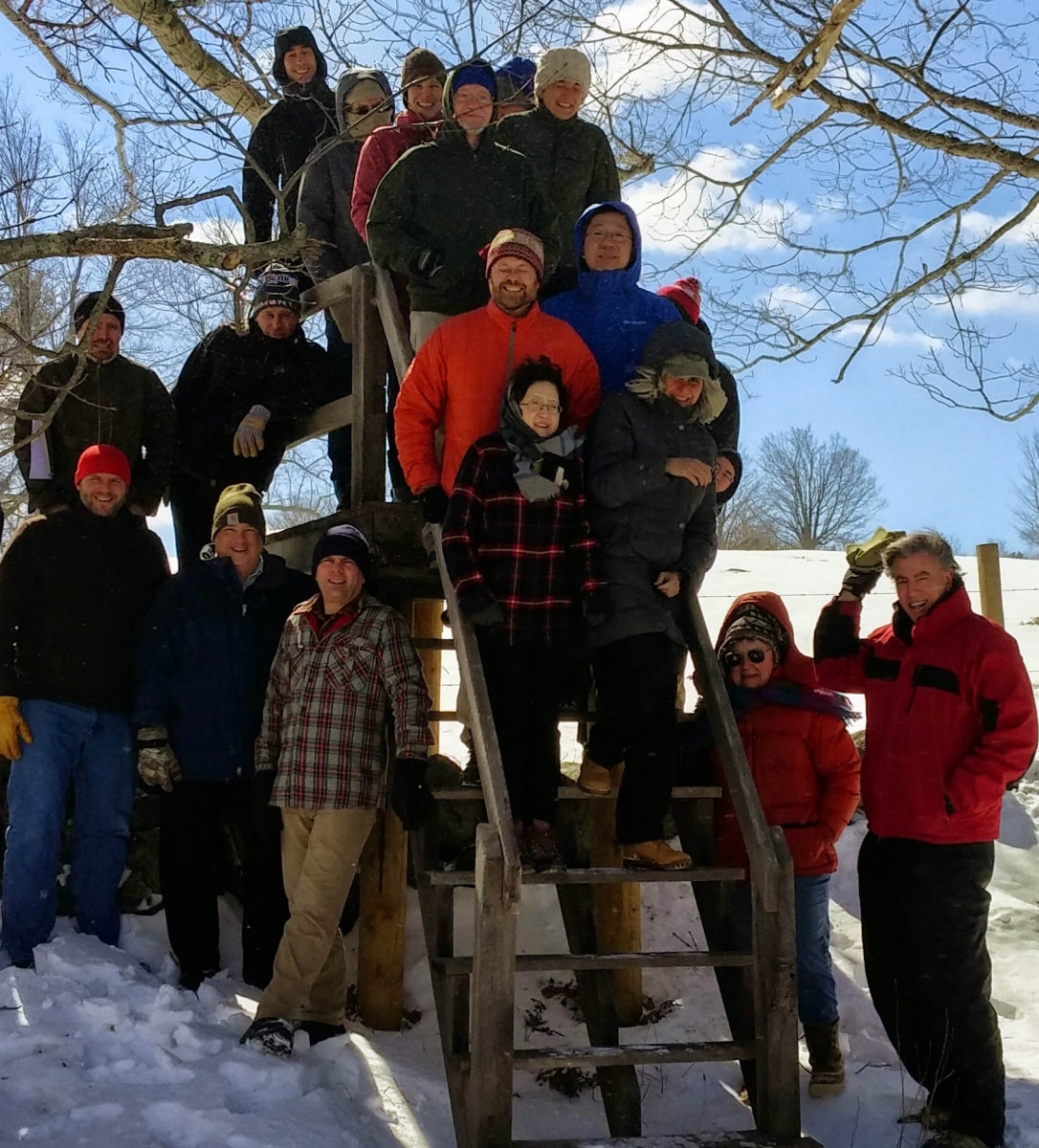You are here
About The Lab
 |  |
Imagine a Venn diagram that includes forest ecology, landscape ecology, socioecological science, geography, conservation science, macrosystems ecology, and social science. We work in that tiny spot where all those disciplines intersect. While we have projects all over, we take a special interest in New England. We continue a century-long tradition at Harvard Forest of exploring the ways biological, physical, and human systems interact to shape the region, including all the ways the landscape is changing due to global forces, like climate change and forest insects, and due to local forces, like land use. We strive to be the foremost experts on the New England land system. We are a relatively small lab with lots of collaborators. The core group typically includes: Jonathan as PI, one to four post-docs, and two to three research assistants. There are also a few scientists who visit regularly. Due to our remote location, we do not typically have graduate students working full time in the lab. However, Jonathan co-advises and serves on students’ committees at Harvard, Boston University, and UMASS—so, students often visit or work for short stints in the lab. REU students work with us each summer. Our lab nests within the Harvard Forest community, which includes a handful of other ecology labs, a rotating cadre of Bullard Fellows, an outstanding communications and education department, and an amazing administration and woods crew team. In our rural setting, building a strong community with our colleagues is critical to our success and our happiness. Toward that goal, we are committed to establishing and maintaining a diverse and inclusive community. Much of our work is aligned with the Harvard Forest Long Term Ecological Research program, of which Jonathan is the incoming Principal Investigator. Our work is also funded by NSF’s Division of Environmental Biology and Coupled Natural and Human Systems programs, the USDA, NASA, the Smithsonian, and private foundations. Notably, we collaborate closely with the Highstead Foundation and they have funded a lot of our scenarios and conservation work. Expectations for Post-Doctoral Fellows in the Thompson Lab: At the loftiest level, I expect you to utilize your post-doctoral fellowship to do the most brilliant science imaginable1. I will try to provide you with the best chance you’ll ever have to focus on research and make your mark in science. This includes resources and opportunities to mentor, to network, to present, to publish, and to lead. Most post-docs will have some broad constraints on their research imposed by their funding source. Still, there will always be flexibility to apply your creativity and talents to craft your specific questions and to how you answer them. I expect post-docs to take ownership of their research and strive to become a world class scientist. At a more tangible level, I expect you to publish first-authored papers in top journals. This is our bread and butter. I’ve always heard that a good rule of thumb is that post-docs should publish at least one first-authored paper in their first year, two in the second, three in the third and so on. This seems reasonable, acknowledging that there will be high variance and that quality is more important than quantity. Overall, I expect you to be a scholar, to understand where your work sits within the broader field, and to advance the state of the science, writ large. I also expect that you will try to help fund your research. Proposal writing is part of the research endeavor and is an essential skill to hone while you’re working in the lab. Please look for new funding sources; be creative on this front, there are many small grants available to post docs. I am always excited to help craft proposals. 1: Hat tip to our LTER Colleague Kristen D ’Angelis who sets this aspirational goal for her post-docs. |
 |  |

